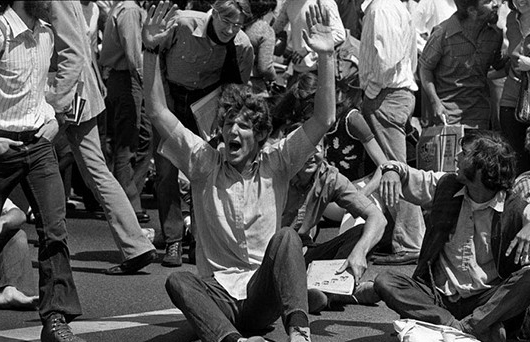Student activism at UCLA: a Black Lives Matter demonstration in 2020 (photo credit: Kristie-Valerie Hoang/Daily Bruin senior staff) and Bill Walton protesting the Vietnam War in 1974.
A year ago this month, In the “UCLA in the 1960s” installment of our 10-part series documenting UCLA’s first century, we noted that “Bruins today walk in the footsteps of the progress made during a time when UCLA students refused to accept the status quo, staging protests and sit-ins, blazing a path in search of a more just and equitable world.”
A month later, in November 2019, a fee hike by the Regents resulted in student protests that garnered national attention and recalled similar protests of the 1960s. The Daily Bruin reported, “Officers responded to the stampede of students and union workers by extending the metal barricades around the entrance and using nightsticks and Taser guns to force the crowd back.”
Little did we know last fall that the coming year would see much more of the same, sparked by the most widespread social upheaval in a half century — or that protesting on college campuses would be curtailed due to the fact that universities were often devoid of students due to a worldwide pandemic. But while students were still in Westwood last spring, protests in support of Black Lives Matter did take place on campus.
The student activism that has actually been a part of UCLA since its inception — and which reached a crescendo in the sixties with the Civil Rights Movement and opposition to the Vietnam War — has continued since that time, encompassing more components of society, targeting human rights around the world and exercising the right — some would say the duty — to call out what is wrong and stand up for what is right.
Whether it’s Bill Walton ’74 protesting in the seventies or Kareem Abdul-Jabbar ’69 writing an op-ed to provide background and context for us in 2020, Bruins have always taken to the streets, the quad, the halls of power, the pen, the computer or the phone to push for what they believe in.
Visit the "Then and Now" archive.

